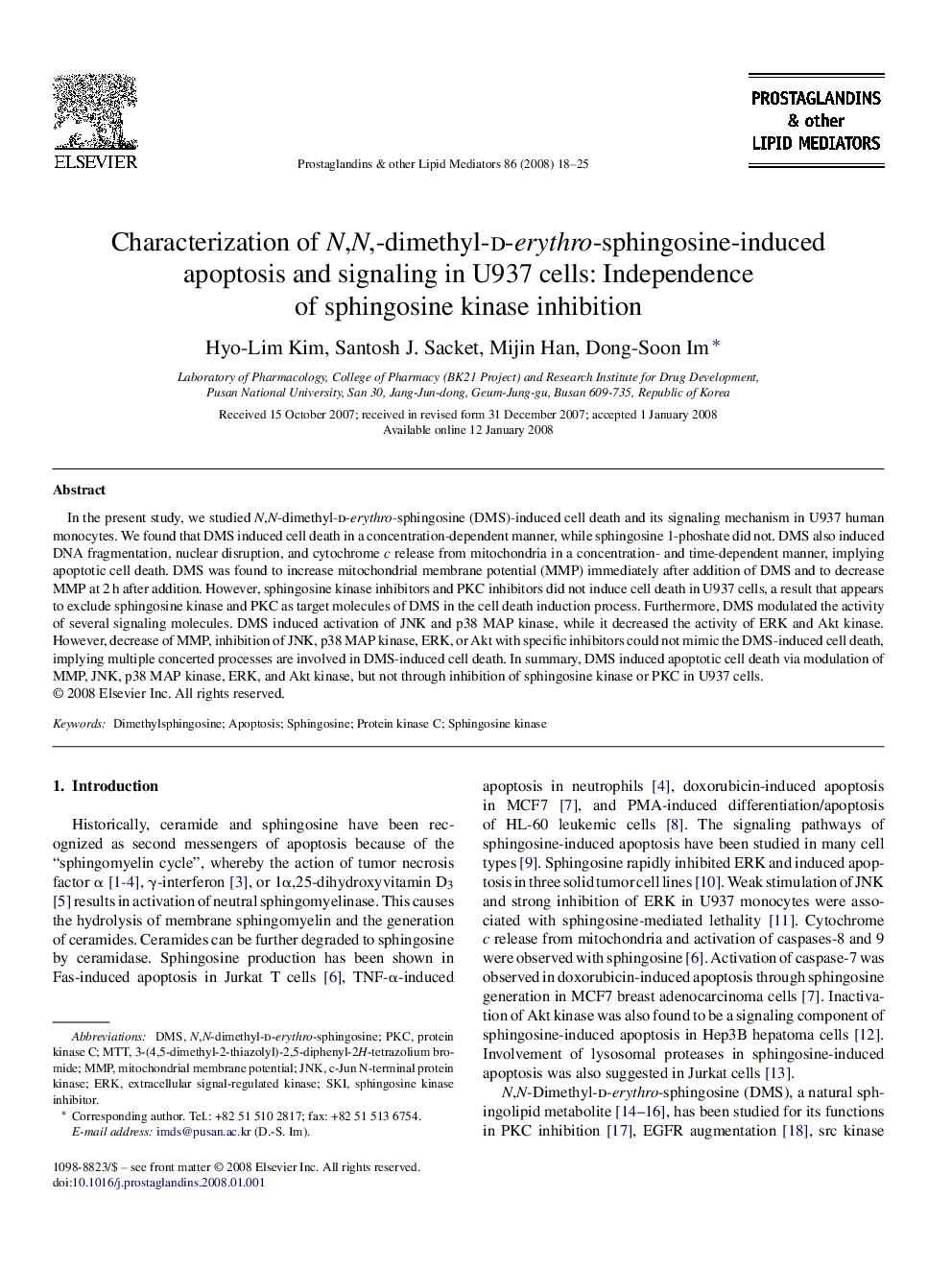| Article ID | Journal | Published Year | Pages | File Type |
|---|---|---|---|---|
| 2020029 | Prostaglandins & Other Lipid Mediators | 2008 | 8 Pages |
In the present study, we studied N,N-dimethyl-d-erythro-sphingosine (DMS)-induced cell death and its signaling mechanism in U937 human monocytes. We found that DMS induced cell death in a concentration-dependent manner, while sphingosine 1-phoshate did not. DMS also induced DNA fragmentation, nuclear disruption, and cytochrome c release from mitochondria in a concentration- and time-dependent manner, implying apoptotic cell death. DMS was found to increase mitochondrial membrane potential (MMP) immediately after addition of DMS and to decrease MMP at 2 h after addition. However, sphingosine kinase inhibitors and PKC inhibitors did not induce cell death in U937 cells, a result that appears to exclude sphingosine kinase and PKC as target molecules of DMS in the cell death induction process. Furthermore, DMS modulated the activity of several signaling molecules. DMS induced activation of JNK and p38 MAP kinase, while it decreased the activity of ERK and Akt kinase. However, decrease of MMP, inhibition of JNK, p38 MAP kinase, ERK, or Akt with specific inhibitors could not mimic the DMS-induced cell death, implying multiple concerted processes are involved in DMS-induced cell death. In summary, DMS induced apoptotic cell death via modulation of MMP, JNK, p38 MAP kinase, ERK, and Akt kinase, but not through inhibition of sphingosine kinase or PKC in U937 cells.
